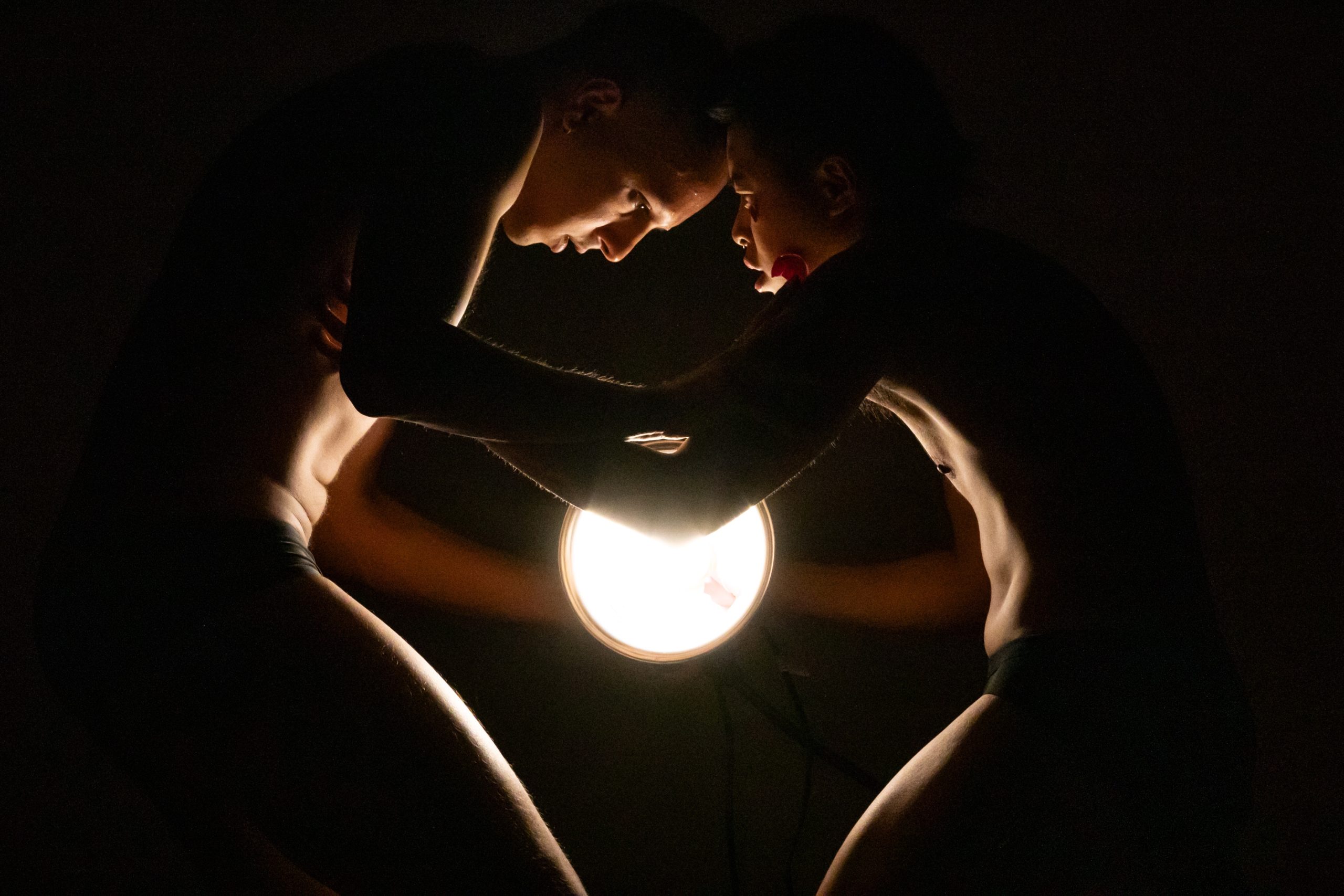Words by Sunhi Keller.
An eerily tall, hunched figure emerges from the darkness, lit only by the yellow light of a lamp held in its hands. As the shape slowly walks towards the middle of the stage, the lamp reveals extra limbs – the figure is two bodies merged, one perched atop the other’s shoulders. As the performers are dressed only in small black underwear, the light creates a contrapposto effect across their skin, deepening the edges and curves of their abdomens, biceps, and thighs through shadows. The face of the performer on top is distorted by layers of white rose petals – in the stark contrast of light, he almost looks like a grotesque creature – a goblin riding his victim. The light flicks on and off as he slowly removes his petals one by one. He opens his mouth to reveal blood-colored roses that ooze onto the floor. The dancers then cut off the light, momentarily engulfing viewers in darkness. By controlling the light, they allow us to see only pieces of what exists, prompting us to question: what hides in the dark?
The Edge of Desire Has a Way of Curving, performed and created by Demetris Charalambous and Riven Ratanavanh, is a dance-theatre piece which explores queer desire and intimacy, power and pain, longing and loss, through a world of illumination and shadow.
Charalambous and Ratanavanh eventually separate into two standing bodies, each holding their own lamp. The performers face each other, shining their lights alternately on and off each other. It feels almost as if they are in a staring contest, an intimate stand-off with each other. Charalambous and Ratanavanh then turn their lights to the audience, inviting us to participate in the stand-off, in the questioning of what we are looking at, reversing the ones who are exposed.
The two performers travel through Performance Space New York and land in a brick-walled corner together, the audience flocking behind them. They lean against the walls, continuing to turn the light on and off of each other. Once again, they flash a light in our direction, a bulbous floating circle that both blinds us and focuses on us before moving underneath the bleachers. They stretch their bodies and lights on the poles, creating new images of yearning. Ratanavanh swings the light over Charalambous’s supine body, and each part he illuminates moves towards the light, as if the light controls the movement. Just like Charalambous and Ratanavanh show the shadows and divots of their own bodies, they also show the dark crevices of the room before traveling back towards the main stage.
Charalambous and Ratanavanh continue creating dramatic images with their lights, their shadows twisting and contorting on the white wall behind them. Through the light, we the spectators are challenged to question what we are looking at – we are repeatedly forced to imagine and interpret what we are shown and not shown. At the end of the piece, the performers leave the lamps shining on the floor, relinquishing the fight over control, yielding the power of gaze.
